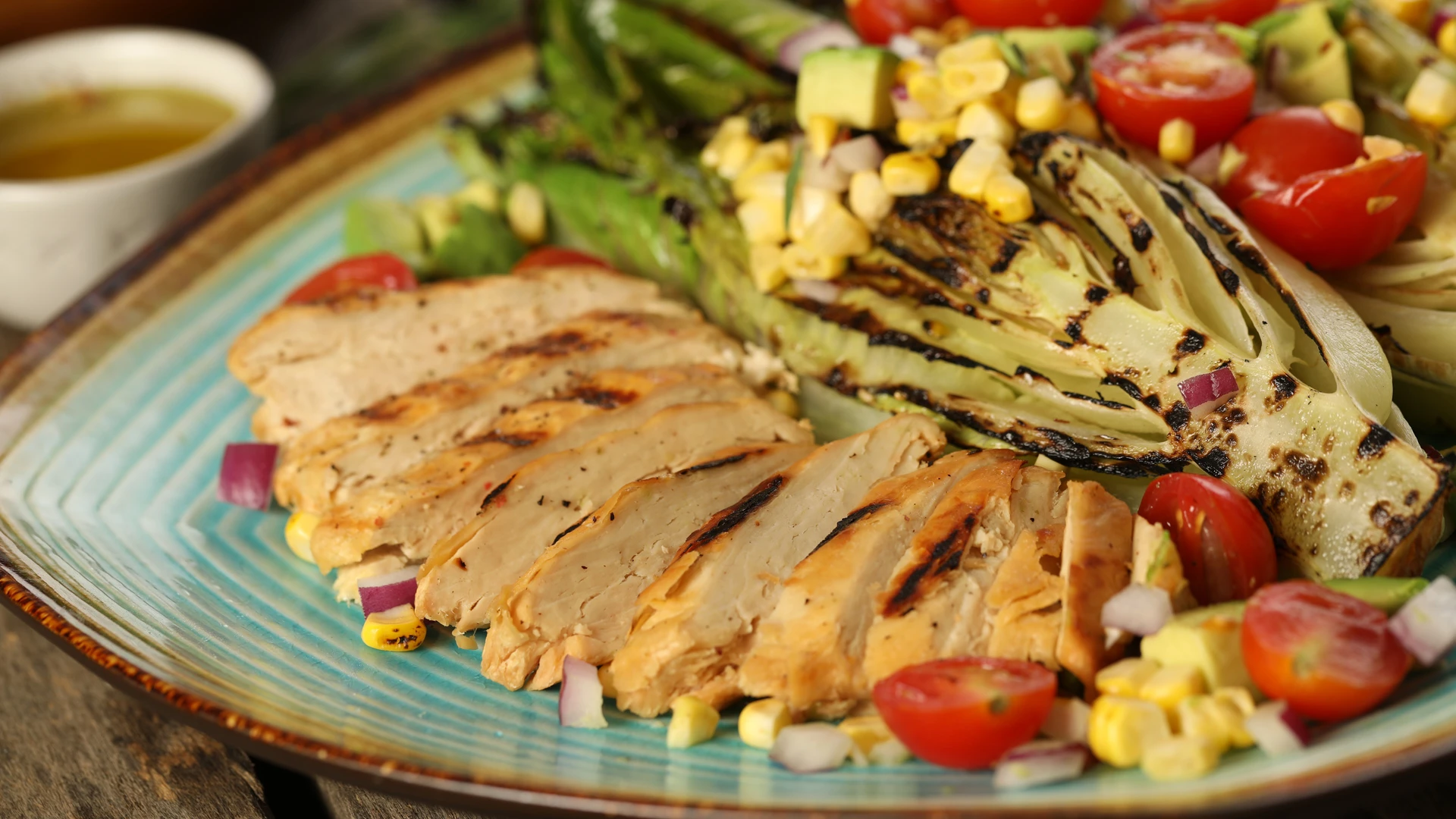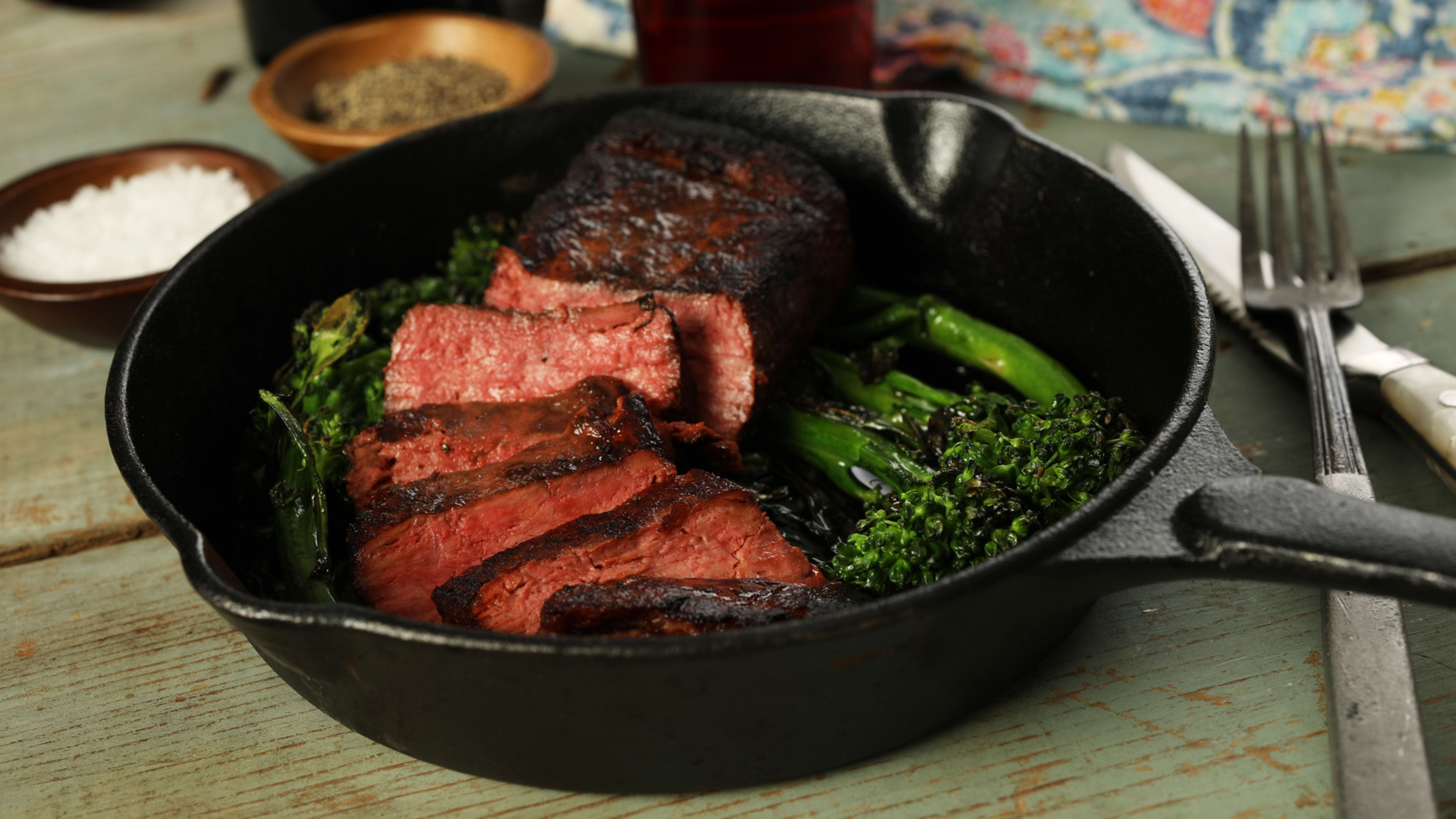Inside a brewery-like space in Boulder, Colorado, fermentation tanks are growing mycelium—the root-like part of mushrooms—instead of brewing beer. Meati Foods, a new alternative meat brand, is making the fungi into steak and chicken breasts that look remarkably similar to the real thing.
The launch of the brand today is a milestone for the plant-based meat industry, where companies like Impossible Foods and Beyond Meat have grown exponentially by selling ground products like burgers, but haven’t yet offered whole cuts of “meat.” Mycelium is unique in that it says it can naturally replicate the taste and texture of meat. It’s also something that can be produced at scale.
“The particular strain that we use is one of the fastest-growing organisms on the planet,” says Tyler Huggins, cofounder and CEO of Emergy Foods, the startup that launched Meati Foods. (The cofounders met as doctoral students at the University of Colorado, and initially explored the use of mycelium to make next-generation batteries before pivoting into the world of food, where there was more demand for their solution.) “That’s very beneficial for overall production efficiency. Meat demand is very high, so we have to be able to produce large volumes, and time is very important when it comes to the overall cost.

The fibers inside the fungi are key to the texture of the company’s new food. The mycelium’s long strands of fiber “are similar to muscle strands in products like steaks and chicken breasts,” Huggins says. “That’s very difficult to replicate with plant-based proteins. . . . That’s why you see mostly ground products because it’s just difficult. We have that natural fibrous structure and so that gives you the mouthfeel of whole-muscle products.”
The company “brews” the mycelium inside fermentation tanks, where it grows so quickly that it can fill a tank overnight. Then the material is harvested, separated from water, blended with a few natural ingredients such as vegetables, and formed into the shape of a steak or chicken breast using a proprietary process. Because no real research existed about how to work with mycelium in this way, the company’s researchers are figuring it out themselves. Their technique uses minimal processing and avoids the need for soy, wheat, or pea protein, because the mushrooms have enough protein naturally.
At the scale of a large commercial brewery, the company could produce a very large amount of food quickly. “At scale, we could produce the meat equivalent of nearly 4,500 cows overnight using a process that’s over a thousand times more efficient per acre as far as resource use,” Higgins says. “And even compared to something like soy, which has had tons of money and time to develop the most efficient process they can, we’re well over 20 times more efficient at producing protein per acre using significantly less land, water, and energy in the process.”
Like other companies in the alternative meat space, the startup wants to help address the environmental footprint of meat production. Beef has a particularly large impact, both because of the huge amount of land required to grow cattle feed or graze cattle, sometimes expanding into critical areas like the Amazon rain forest, and because cattle belch methane, a potent greenhouse gas. Meati Foods also chose to start with steak as one of its first products because it can sell for a premium, and the products are expensive to produce while the startup is still at a small scale.

The food will show up first at a limited number of restaurants in Colorado early next year, with a focus on steakhouses and farm-to-table restaurants—both places that have been less likely to serve plant-based meat so far. “We’re setting our standards very high when it comes to quality and taste and texture,” he says. “We want it to be a truly drop-in replacement to animal-based meat products and getting that validation from restaurants that pride themselves on animal-based meat products that say, ‘Listen, we like it, it’s on par with animal protein, and we’re proud to serve it on our menu.’ That’s what we’re going for.” Other products, such as chicken nuggets or burgers, are also possible to make using the company’s system, but the ability to make whole cuts of meat is unique and fills a gap in the market.
As the process becomes more automated and production grows, the cost will come down. The company believes that its chicken breasts, for example, can eventually match the wholesale cost of chicken. “We have a mission in our company to provide nutritious, plant-based meat to everyone forever,” says Higgins. (He notes that although the FDA classifies the food as plant-based meat—and the company is marketing it that way for the moment—it’s technically fungi-based.) “What that means is it has to be affordable to everyone. We don’t want this just to be a premium product at fancy restaurants. We want to make sure that everybody in the world, especially those who really need protein, have access to this. And so we’ve designed everything in that concept, the idea to be scalable and ultimately be cost effective.”
Recognize your brand’s excellence by applying to this year’s Brands That Matter Awards before the early-rate deadline, May 3.
